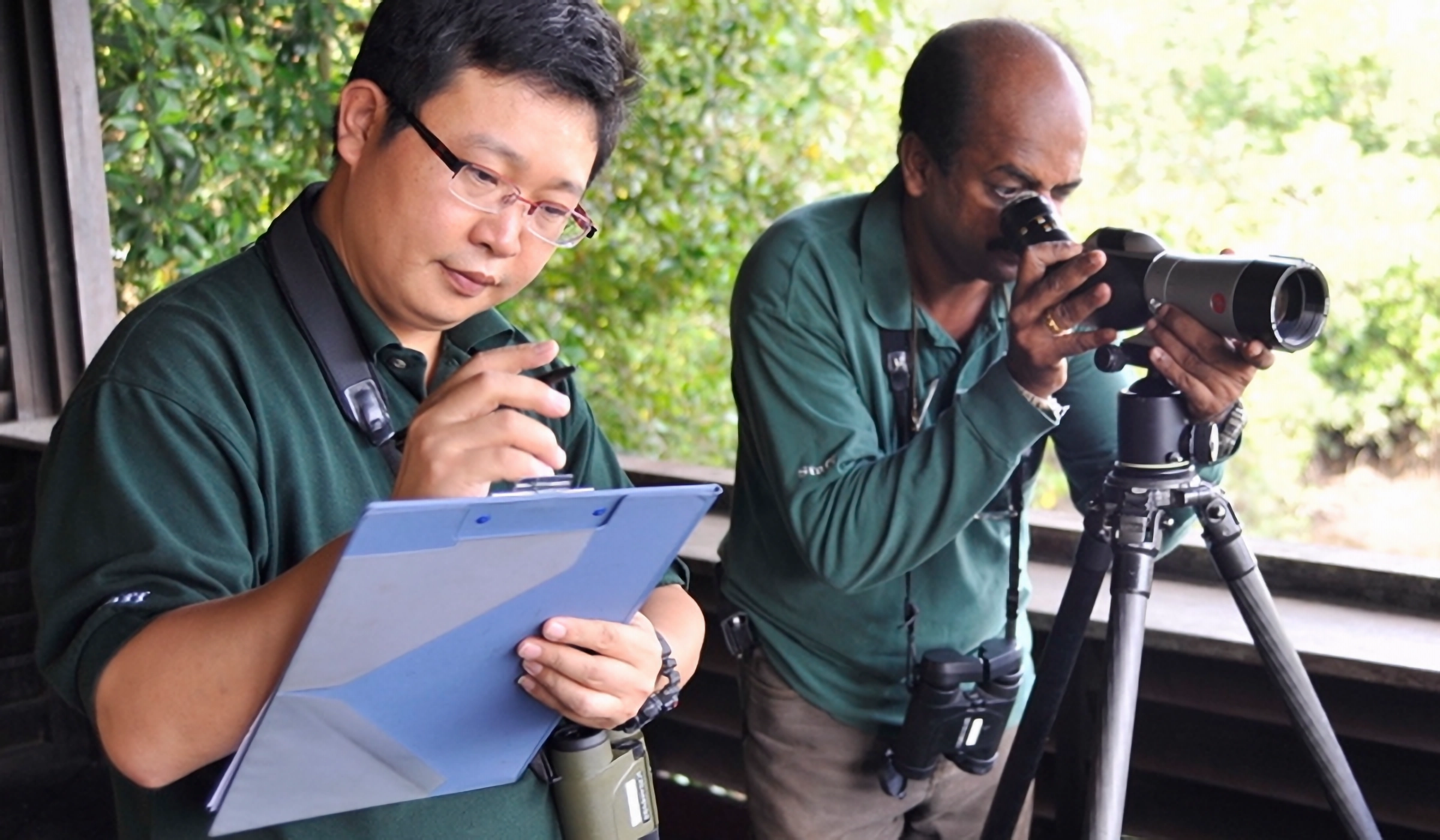Embracing Singapore’s Wild Side
Embracing Singapore’s Wild Side: Meet the Most Tech-savvy Bird-lover in the City

From ‘spying’ on birds with high-tech gear to getting up close with crocodiles, Conservation Manager David Li helps to protect the diverse native and migratory species found on our shores.
Singapore is a city with diverse appeal. Some see it as a vibrant green cityscape. Others think of it as an urbanised city state. But despite it being highly developed, the National Parks Board has conserved and expanded huge swathes of greenery with nature reserves, parks, gardens, an extensive park connector network, therapeutic gardens, nature play gardens, and more. And these green gems are home to a wide range of biodiversity: one with majestic beasts, unique migratory birds, and everything in between.
Of course, keeping those areas thriving is a whole other challenge…
Protector of Sungei Buloh
That’s where David Li comes in. He’s the boots on the ground, part of the army of experts that protects our wildlife to allow citizens and visitors alike to visit and witness the magic. He’s part of the team that manages one of our richest nature reserves: Sungei Buloh Wetland Reserve.

As Singapore’s first ASEAN Heritage Park, Sungei Buloh Wetland Reserve is arguably the most unique nature reserve. It boasts stunningly rich biodiversity in its wetlands and mangrove forest. Don’t be surprised if you see tree climbing crabs, mangrove vipers and even ‘archer fish’, which shoot insects using jets of water so they fall into their waiting jaws.
For David, it’s just another day at the office.
A Walk on the Wild Side
During his early 20s, David had opportunity to carry out shorebird surveys along the coast of the Yellow Sea in China. Since then, he fell in love with the shorebirds — a blanket term for the species of birds that live in wet, coastal environments such as shorelines and mudflats.
Joining the Sungei Buloh Wetland Reserve that is known for its work on shorebird conservation, was thus a natural transition for David, who joined the team in 2008.
If you’ve visited Sungei Buloh and enjoyed the gorgeous scenery, you can thank David and his colleagues. Together they ensure that these delicate habitats, home to over 500 species of plants, mud-dwellers, reptiles, birds, and dragonflies, thrive in a time of climate change and urbanisation.
Eagle-eyed Bird Monitoring
You’ve heard of bird watching and bird calling, but are you familiar with bird census and bird ringing?
These are two long-term monitoring programmes at Sungei Buloh that have been ongoing since the Nineties.
The bird census programme collects monthly data on the bird species that live in the wetland reserve. This includes identifying and counting the number of each bird species found here to understand the key habitat areas for birds, and long-term trends on the overall bird population.
It’s important work, because Sungei Buloh Wetland Reserve is quite the ‘international travel hub’. If you see a small stocky, brown bird with a dazzling white underbelly, it could be the Common Sandpiper. This flighty visitor comes all the way from Central Asia and Central and East Siberia, and David’s work ensures that these ‘tourists’ keep coming to a safe, stable environment.

Shorebirds that breed in China and Russia can fly over 5000m above sea level and cross the Himalayas to migrate to Singapore, a crucial rest stop that keeps bird populations alive by serving as a wintering ground.
This fascinating fact was confirmed by David and team when they used bird ringing and tracking technology to keep tabs on threatened and endangered shorebirds. His work uncovers much-needed information on the declining shorebird populations due to loss of habitat.
Tracker Extraordinaire
Over the years, David has wielded an arsenal of bird-tracking technology. This includes precise geolocators, handheld radio trackers and satellite trackers.
Geolocators record light and identify the location of birds based on the timings of sunrise and sunset.
Satellite tracking technology brings pin-point cameras alive, hundreds of miles up in the sky, and allows David to accurately learn the detailed migration routes of the shorebirds.
Lastly, radio tracking technology is used to study the local movement of shorebirds in Singapore. Individual birds are fitted with radio trackers that emit a unique frequency and can be identified from as far away as 2km in the open sea.
But David doesn’t just have birds on the brain. He also conducts crucial studies and surveys for other wildlife such as crocodiles and monitor lizards.
The crocodile species found in Singapore is the Estuarine Crocodile, and these reptiles can grow up to 5m long. They are apex predators and David will remind you to observe them from a distance as with all wildlife, and stay on the designated trails when you visit the reserve.
Guardian of the Shorebirds
Field work can be a back-breaking job — literally. David often slogs through the soft mudflats, where humidity is punishingly high, and the ground can hide anything from crabs to swarms of sandflies and even a snake or two. Although David’s job isn’t easy, the sweat, pain and stress are all worth it to keep watch over dozens of fragile animal species.
His proudest achievement? In the radio-tracking study in 2016, his team found that over 70 per cent of shorebirds that roost in the Sungei Buloh Wetland Reserve feed at the nearby Mandai Mangrove and Mudflat. This information enriched Singapore’s landscape forever, as it contributed to the establishment of Mandai Mangrove and Mudflat Nature Park, announced in 2018.
“If you enjoy protecting Singapore’s wildlife, making friends, and aren’t afraid of hard work, come and join me in this field!” David says.
He adds, “There is a Chinese saying ‘只要功夫深,铁杵磨成针’ that translates to ‘If you work at it hard enough, you can grind an iron bar into a needle’. To me, this means identifying and fulfilling my purpose, doing my best, continuously learning and improving. This is the best piece of advice that I can share.”

